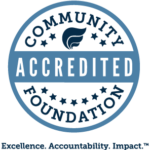Opinion: It’s time to fix the real issues behind education inequity
Feb 22, 2022
 In this piece written for the CT Mirror, Fairfield County’s Community Foundation President & CEO Juanita James discusses systemic inequities in our public school system.
In this piece written for the CT Mirror, Fairfield County’s Community Foundation President & CEO Juanita James discusses systemic inequities in our public school system.
Every child born in Fairfield County deserves an equal opportunity to succeed — regardless of their ZIP code.
Children, after all, have no choice over where they are born and where they attend school.
However, we know that where you are born significantly impacts your likelihood of graduating high school, moving on to college, and pursuing a family-sustaining career. Those who grow up in less-affluent communities face disadvantages that are not prevalent in wealthier areas.
These systemic inequities ensure that students who grow up in poverty are more likely to stay in poverty as adults, while those who grow up in more affluent settings are put on a different track.
Our children deserve better — and it starts with a fundamental rethinking of how we fund and support our public schools.
This month, many in our community criticized a controversial decision by the Darien School Board to reject a plan that would have admitted 16 students from neighboring Norwalk into its schools through the state’s Open Choice program.
Like many others in our county, I disagree with the decision. It denies opportunities for these 16 students — and it also misses an opportunity for Darien schoolchildren to build relationships with and learn from classmates who have different backgrounds.
Yet even if the school board had made what I consider to be the right decision, it would not have improved the circumstances for the nearly 12,000 other children who attend Norwalk’s public schools.
A child growing up in Norwalk attends a public school system that receives 18 percent less funding, on average, than they would if they grew up just over the border in Darien. That child is also less likely to have the means to participate in after-school activities, access high-speed internet, or have many of the other advantages afforded to most students in Darien.
It shouldn’t come as a surprise, then, that in Norwalk Public Schools, the English proficiency indicator — a key measure of literacy — is only 63% compared with 94% in Darien and its post-secondary entrance rate is 70%, compared with 88% in Darien.
These disparities are similar when we compare Fairfield County’s other urban school districts, with those in our more affluent suburbs.
Programs like Open Choice help in closing the gap — but their overall impact is limited. Bridgeport is often cited as a local example of the success of the Open Choice program. However, only 250 students — out of a school-age population in Bridgeport of more than 19,000 — participate each year.
Big problems require big solutions. And it’s past time for our state to dramatically rethink how it supports public schools so every child in every district can receive a great education.
We should be looking to systemic solutions — committing to actions such as fully funding the Education Cost Sharing Grant program, fully funding PILOT, and incentivizing shared services across districts — to ensure that all Connecticut schools are equitably resourced.
We invite those who care about equity in education to join us in supporting efforts to close the opportunity gap.
Together, we can work to ensure that every child born in Fairfield County has an opportunity to thrive — regardless of their ZIP code.
Juanita James is president and CEO of Fairfield County’s Community Foundation.
– This article was originally published on ctmirror.org on February 22, 2022.

